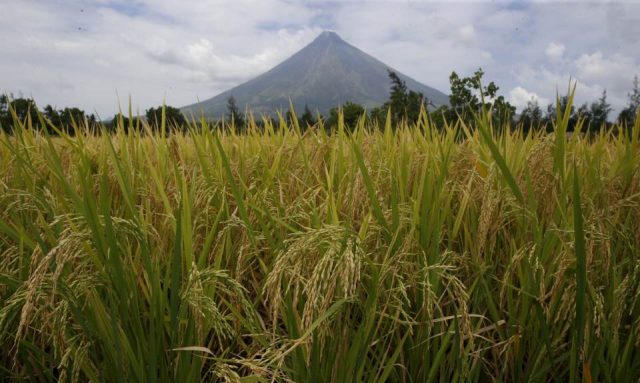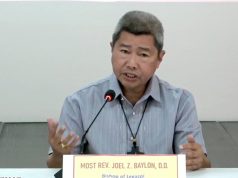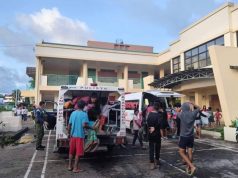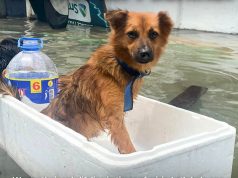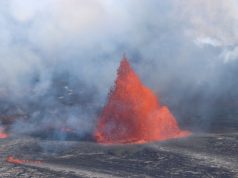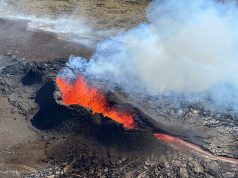LEGAZPI CITY, Philippines — (UPDATE – 11:50 a.m.) The Philippine Institute of Volcanology and Seismology is closely monitoring the behavior of Mayon Volcano after it spewed ash in a phreatic eruption during heavy rains Saturday afternoon.
Cedric Daep, Albay Public Safety Emergency Management Office chief, said residents from communities within a six-kilometer zone around the volcano’s crater have been ordered evacuated, including parts of Guinobatan, Ligao City, Camalig and Daraga.
However, he said, the heavy rains have made it difficult for them to collect data.
The 4:21 p.m. eruption sent up a 25-kilometer ash and steam plume that drifted southwest and dissipated after close to two hours.
Traces of ash fell on Barangay Anoling, Daraga where rumbling sounds were heard; Barangays Sua, Quirangay, Tumpa, Ilawod and Salugan in Camalig, where residents in the town center also reported a sulfuric odor; and Barangays Tandarora, Maninila and Travesia in Guinobatan.
“Since the eruption, rockfall events have been intermittently recorded” while a “faint crater glow” was detected late Saturday night.
The incident prompted Phivolcs to raise the alert level on Mayon from Level 1 (abnormal) to Level 2 (ncreasing unrest).
“This means that current unrest is probably of magmatic origin, which could lead to more phreatic eruptions or eventually to hazardous magmatic eruptions,” Phivolcs said.
Mayon’s most destructive eruption was in February 1841, when lava flows buried a town and killed 1,200 people. It last erupted in 2014, spewing lava and forcing thousands of people to evacuate.
“The public is strongly advised to be vigilant and desist from entering the six kilometer (3.7 mile) radius Permanent Danger Zone to minimize risks from sudden explosions, rockfall and landslides,” Phivolcs said.
It advised people experiencing ashfall to cover their noses and mouths with a damp, clean cloth or dust mask. It also said aircraft must avoid flying close to the volcano’s summit.
Those within the slope of the volcano, but outside the 6-km danger zone, were told to take precautionary measures against possible roof collapses due to accumulated ash and rainwater.
Phivolcs chief Renato Solidum said the volcano appeared due for another eruption as it has been displaying abnormal behavior since late last year.
But Daep said those in evacuation centers may be allowed to return to their homes later in the day, unless Phivolcs raises the volcano alert level further.
He said not all residents evacuated live inside the 6-km danger zone.
“We have not reached the critical level,” he said in a radio interview. “Alert level 3 is what we considered critical, 4 is when eruption is imminent, and 5 is eruption in progress.” (with a report from Reuters)

